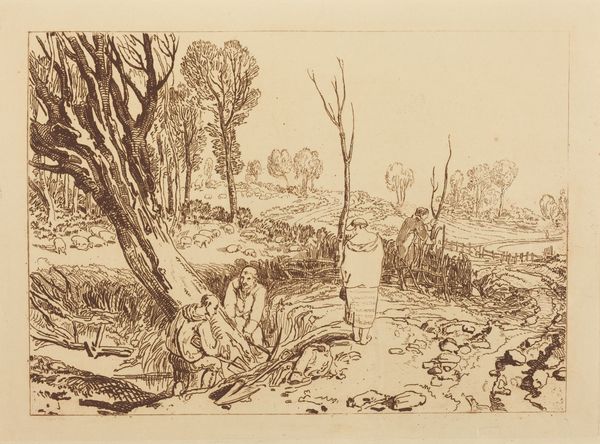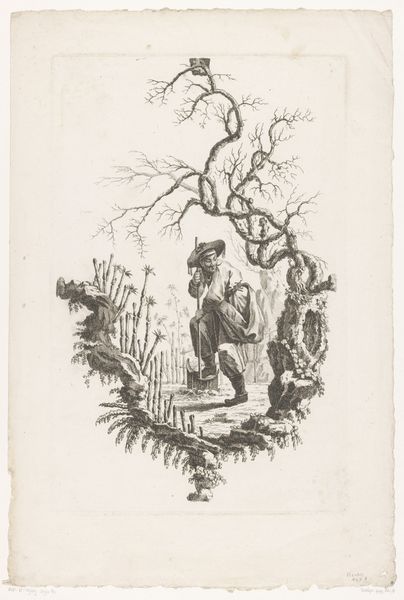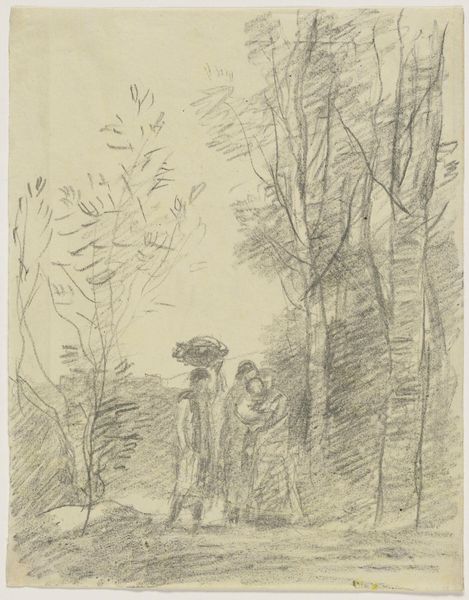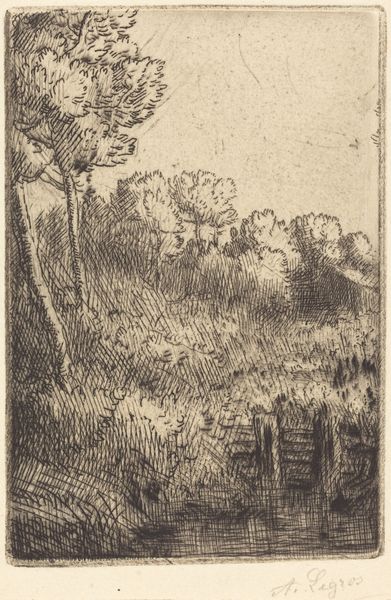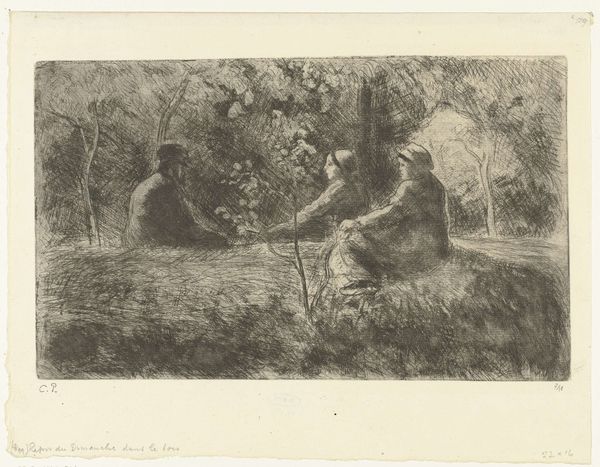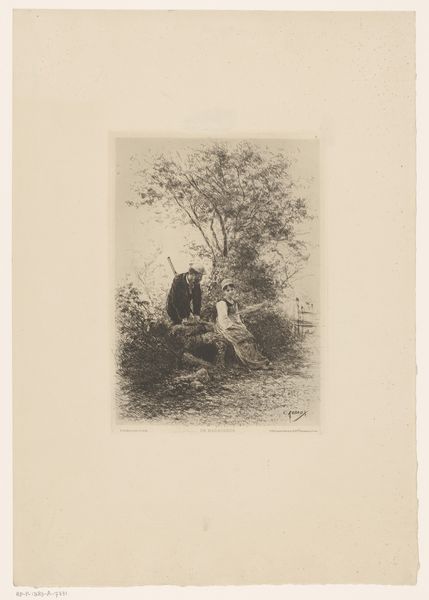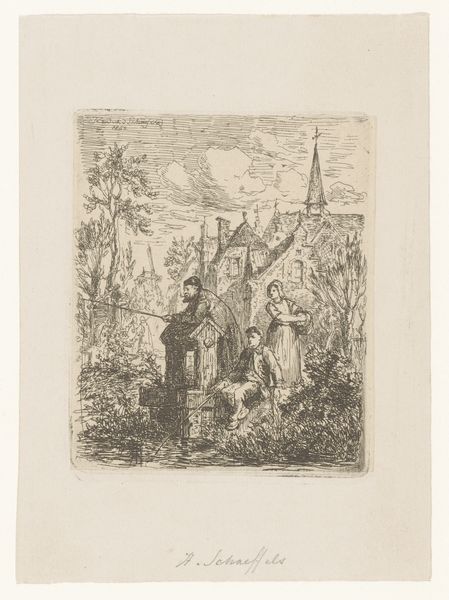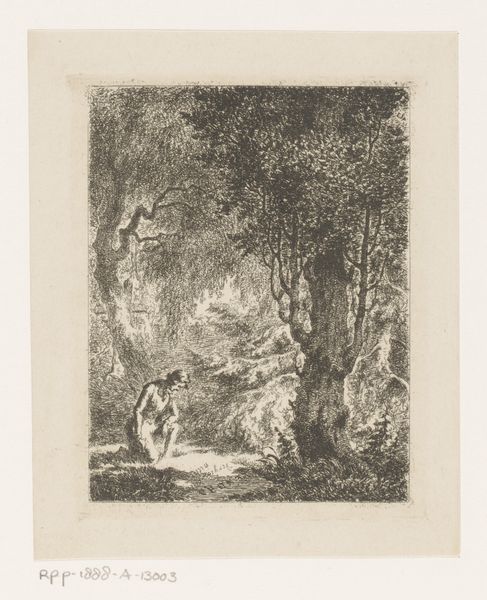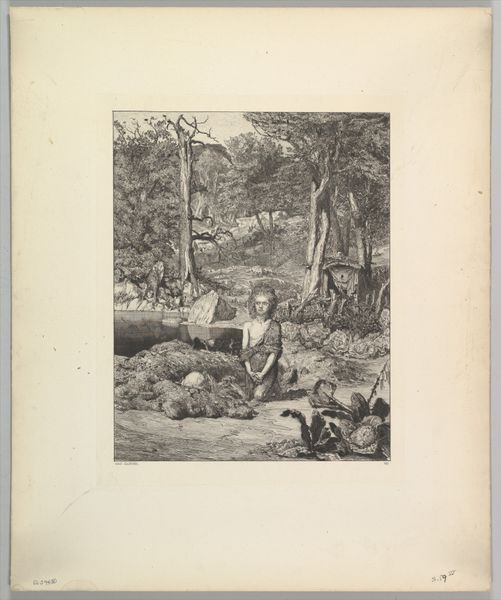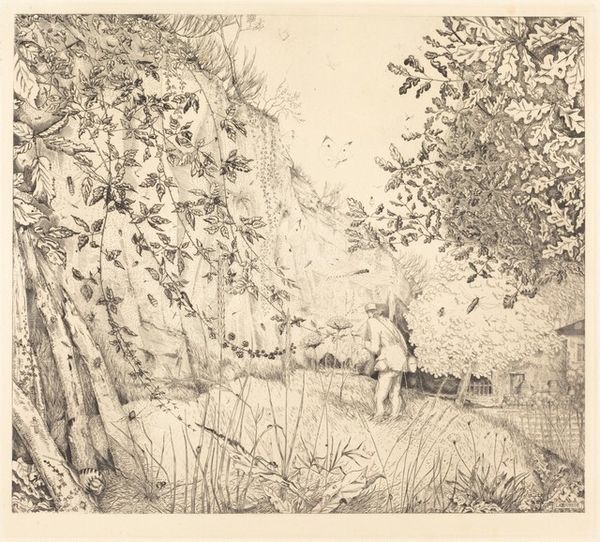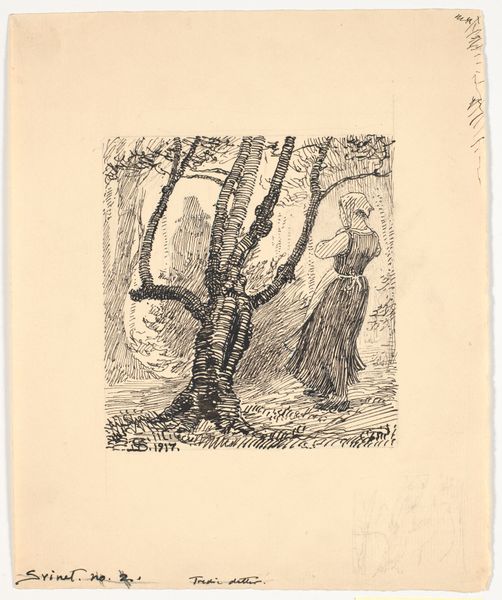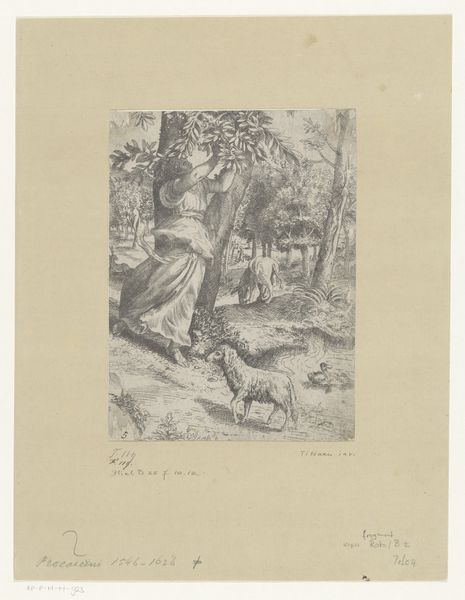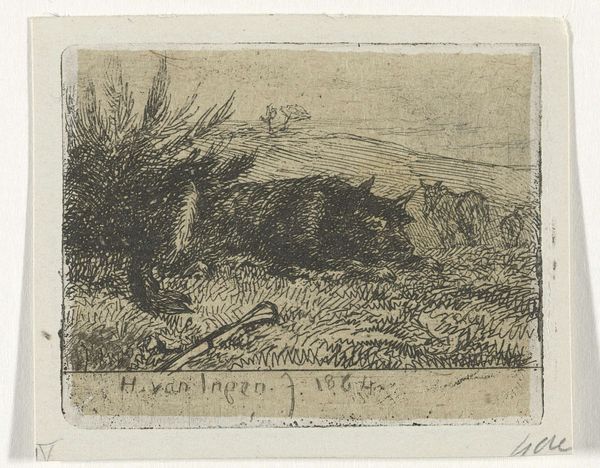
#
amateur sketch
#
toned paper
#
light pencil work
#
pencil sketch
#
incomplete sketchy
#
ink drawing experimentation
#
pen-ink sketch
#
pencil work
#
watercolour illustration
#
watercolor
Dimensions: height 247 mm, width 199 mm
Copyright: Rijks Museum: Open Domain
Curator: The initial impression I get from this drawing is one of tension. A somewhat foreboding atmosphere hangs over the scene. What are your first thoughts? Editor: I concur. I see nervous energy in Verlat’s “Landschap met jager en twee vechtende jongens," attributed to a period between 1834 and 1890, particularly around how childhood plays out within specific cultural frameworks. It seems Charles Verlat chose to depict a landscape marked by youthful conflict. Curator: Yes, the contrast between the open landscape and the compressed foreground adds to that unease. Consider the figures – are they symbolic, do you think, of societal struggles playing out even in ostensibly carefree settings? Editor: Well, childhood scraps weren't always just scraps. Often they mirrored societal attitudes about conflict resolution and displays of dominance and could signify future political leanings or a foreshadowing of social unrest. Didactic paintings from this era would teach by example. Curator: So the artist's selection of children fighting may aim to express deeper rooted and intergenerational tension. Even the landscape could take on meaning. Can the surrounding landscape with its apparent hunter figure then symbolize latent threat or even impending doom? Editor: Quite possibly. The presence of the hunter subtly shifts the reading; it's a constant state of alert within a landscape promising danger. His very inclusion speaks to themes prevalent within art of the era – rural existence juxtaposed with mankind versus the natural environment. What do you perceive when looking closely? Any significant patterns emerging from its symbolism that strike you particularly? Curator: The hunter in the distance could mean the corruption of innocence or possibly highlight the boys entering a phase where they will inevitably become predator, a subtle comment upon masculinity, for instance. The choice to use pencil and watercolor further enhances the dream-like quality as well, perhaps referencing art of his predecessors and artistic values carried through culture to his generation. The visual language hints to generational commonality. Editor: It’s a masterful portrayal, considering it's “just” pencil and watercolor on toned paper. The seemingly “amateur sketch” feel masks a sharp understanding of pictorial dynamics and the subtle politics inherent within any landscape portrayal—particularly those populated by children and hunters! Curator: The incomplete sketchy portions heighten that raw almost unsettled sense, almost like the story and emotions it carries are unfinished. An intriguing view into humanity! Editor: Agreed. This piece challenges assumptions on seemingly "simple" rustic scenarios while prompting deeper interrogation into conflict development rooted deeply at our very cultural inheritance.
Comments
No comments
Be the first to comment and join the conversation on the ultimate creative platform.

